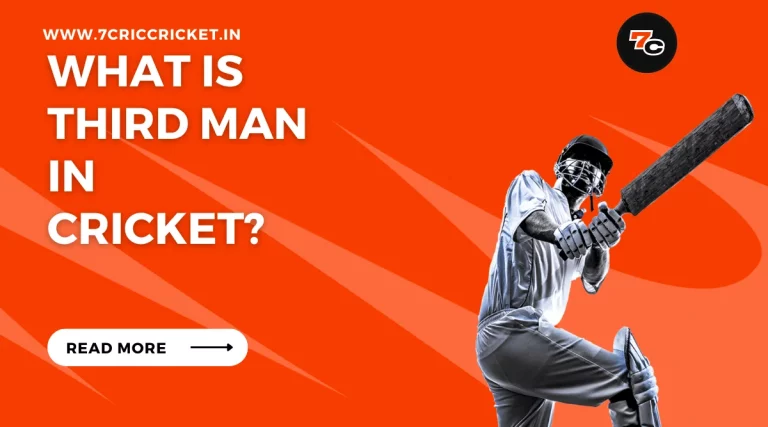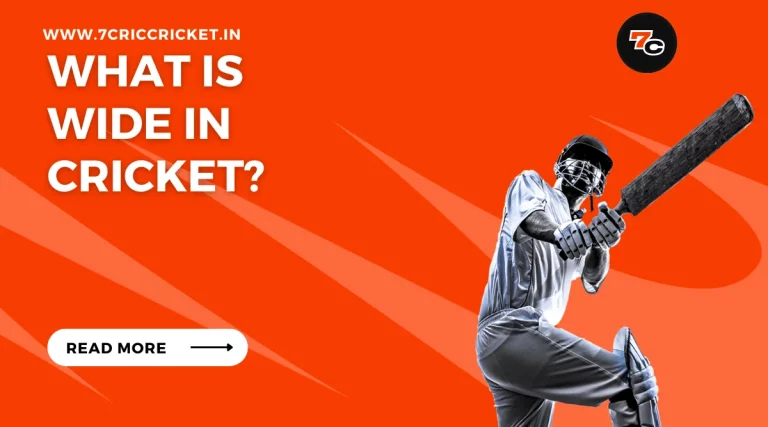What Is Back Foot in Cricket?
The back foot in cricket holds a significant role in the game, influencing techniques, shot selection, movement, and balance. Understanding the intricacies of back foot play is crucial for any aspiring cricketer.
In this article, we delve into the importance of the back foot, exploring its impact on batting and how it can be improved.
Get up to ₹20,000 Bonus Every Week!
Get up to ₹20,000 Bonus Every Week!
- Fastest Indian Rupees Withdrawals
- Fast deposits with UPI
- Available in four different Indian languages
With analytical insights and expert knowledge, we aim to provide valuable information for cricket enthusiasts seeking liberation in their understanding of this fundamental aspect of the game.
Summary & Key Takeaways
ShowImportance of the Back Foot
The back foot plays a crucial role in a cricketer’s technique and balance during various batting strokes.
It is the foundation upon which a batsman generates power and maintains stability while executing shots.
The importance of weight distribution and the role of the back leg in generating power cannot be overstated.
When a batsman prepares to play a shot, the weight distribution on the back foot allows for a solid base. This helps the batsman maintain balance and stability throughout the stroke.
By keeping the majority of their weight on the back foot, batsmen can effectively transfer their weight onto the front foot during the shot, enabling them to generate power.
The back foot also plays a significant role in generating power during shots. As the batsman initiates the downswing, the back leg acts as a pivot point, allowing for a smooth transfer of energy from the ground up through the body.
This transfer of energy, combined with the rotation of the hips and shoulders, results in the generation of power in the shot.
Back Foot Technique in Batting
Back foot technique in batting is a fundamental aspect of a cricketer’s skill set, allowing for precise footwork and effective shot execution.
The power generated from the back foot is crucial in generating momentum and transferring it into the shot. By using their back foot effectively, batsmen can generate power and control their shots.
To understand the significance of back foot technique, let’s take a closer look at the key components and benefits:
| Components | Benefits |
|---|---|
| Weight transfer to the back foot | – Increased stability- Better balance |
| Proper alignment of the body | – Improved shot execution- Enhanced timing |
| Quick footwork | – Greater adaptability- Ability to adjust to varying deliveries |
By utilizing the back foot power, batsmen can execute a variety of shots with precision and power.
The back foot drive, pull shot, and cut shot are some examples of shots that heavily rely on the back foot technique for their effectiveness.
The impact of the back foot on shot selection is significant. The position of the batsman’s back foot influences the type of shots they can play effectively.
In the subsequent section, we will explore how the back foot technique influences shot selection and the range of shots available to batsmen based on their footwork.
Impact of the Back Foot on Shot Selection
Utilizing proper back foot technique in batting significantly influences shot selection and the range of shots available to batsmen based on their footwork.
The positioning of the back foot plays a crucial role in determining the type of shots a batsman can play, particularly on the off side. Here are four key ways in which the back foot impacts shot selection in cricket:
1. Back foot positioning for off side shots
The placement of the back foot enables batsmen to access a wider range of off side shots. By positioning the back foot closer to the off stump.
Batsmen can effectively reach for balls outside the off stump and play cut shots, square drives, and backfoot punches.
2. Using the back foot to generate power in shots
When a batsman transfers their weight onto the back foot, they can generate more power in their shots.
By shifting their weight onto the back foot, batsmen can effectively use their body’s momentum to hit the ball harder, allowing them to play powerful shots such as the pull and hook shots.
3. Balancing footwork and shot selection
The back foot serves as a pivot point for a batsman’s footwork. By maintaining proper balance and positioning of the back foot.
Batsmen can swiftly adjust their stance and play a wide variety of shots, including drives, pulls, and cuts, depending on the line and length of the ball.
4. Adaptability to different pitch conditions
The back foot technique also allows batsmen to adapt to different pitch conditions. On slower pitches with low bounce.
Batsmen can use their back foot to get closer to the ball and play shots with more control. On quicker pitches with extra bounce, the back foot can be used to adjust the height of the shot, avoiding unnecessary edges or mistimed shots.
Back Foot Movement and Balance
Proper movement and balance of the back foot are essential in achieving optimal shot selection and execution in cricket.
When a batsman is facing a delivery, the movement and weight distribution on the back foot play a crucial role in determining the quality of their shot.
The back foot movement involves shifting the weight onto the back foot as the bowler approaches, allowing the batsman to have a solid base from which to generate power and control.
Maintaining a strong base on the back foot is crucial for several reasons. Firstly, it enables the batsman to effectively transfer the weight onto the front foot when playing attacking shots.
Secondly, it allows the batsman to adjust their position and respond to variations in the line and length of the delivery.
By having a stable back foot position, the batsman can quickly move forward, backward, or sideways to meet the ball with precision.
Furthermore, a strong base on the back foot provides stability and balance, allowing the batsman to maintain control of their body and bat swing during the shot.
This balance is vital for both defensive and attacking shots, as it ensures that the batsman remains in control of their movements and allows them to execute shots with accuracy and power.
In the subsequent section, we will explore various techniques and exercises that can help improve back foot play in cricket.
By focusing on developing proper movement and balance on the back foot, batsmen can enhance their shot selection, execution, and overall performance on the cricket field.
Improving Back Foot Play in Cricket
To enhance their performance on the cricket field, batsmen can further develop their back foot play by honing their technique and refining their balance and movement.
Improving their back foot play can significantly elevate their ability to handle short-pitched deliveries and play with confidence in different formats of the game. Here are four essential aspects to focus on:
1. Footwork
Batsmen must work on their footwork, ensuring they are light on their feet and ready to move quickly. Proper positioning of the back foot is crucial to generate power and maintain balance while playing shots.
2. Weight transfer
Transferring weight onto the back foot allows batsmen to effectively control the pace and direction of the shot. This technique is particularly important in playing pull and cut shots.
3. Shot selection
Batsmen must choose the appropriate shots based on the delivery and field placements. Developing a range of back foot shots, such as the pull, hook, and cut, will provide them with multiple options to score runs.
4. Practice against short-pitched bowling
Regular practice against short-pitched deliveries will help batsmen develop confidence and improve their ability to play off the back foot. They should focus on timing, footwork, and shot selection to counter the rising ball effectively.
Up to 75% Reload Bonus on Aviator
Up to 75% Reload Bonus on Aviator
- Easy Sign-Up and Deposits
- Win 1000x Bet Amount!
- 450% Bonus up to ₹1,000,000
Final Thought about Back Foot in Cricket
In conclusion, the back foot plays a crucial role in cricket, particularly in batting. It affects shot selection, movement, and balance, ultimately determining the success of a player’s performance.
Improving back foot play is essential for cricketers to enhance their overall skills and techniques. By understanding the importance of the back foot and mastering its technique, players can excel in their game and make more informed decisions on the field.
All You Need to Know about Back Foot
What Are Some Common Mistakes That Beginners Make With Their Back Foot Technique in Batting?
Some common mistakes beginners make with their back foot technique in batting include improper back foot weight distribution and a lack of proper back foot pivot. These errors can affect a player’s balance and hinder their ability to generate power and control their shots effectively.
How Does the Back Foot Impact the Power and Accuracy of a Cricket Shot?
The proper positioning and utilization of the back foot in cricket shots is of utmost importance in generating power and accuracy. Understanding how to generate power from the back foot is a fundamental aspect of successful cricket batting.
Are There Any Specific Drills or Exercises That Can Help Improve Back Foot Movement and Balance?
There are specific drills and exercises that can help improve back foot movement and balance in cricket. These exercises focus on enhancing agility, strength, and coordination, ultimately leading to improved performance and shot execution.
What Are the Key Factors to Consider When Trying to Improve Back Foot Play in Cricket?
Improving back foot technique in cricket involves considering key factors such as footwork, balance, and weight transfer. A solid foundation and proper positioning of the back foot are crucial for effective batting and maximizing power and control in shots.
Can the Back Foot Technique in Batting Affect a Player's Ability to Play Different Types of Shots, Such as Drives or Cuts?
The back foot technique in cricket batting plays a crucial role in shot selection and timing. It is imperative for players to have good footwork and master the art of transferring weight efficiently to execute proper shots such as drives or cuts.








